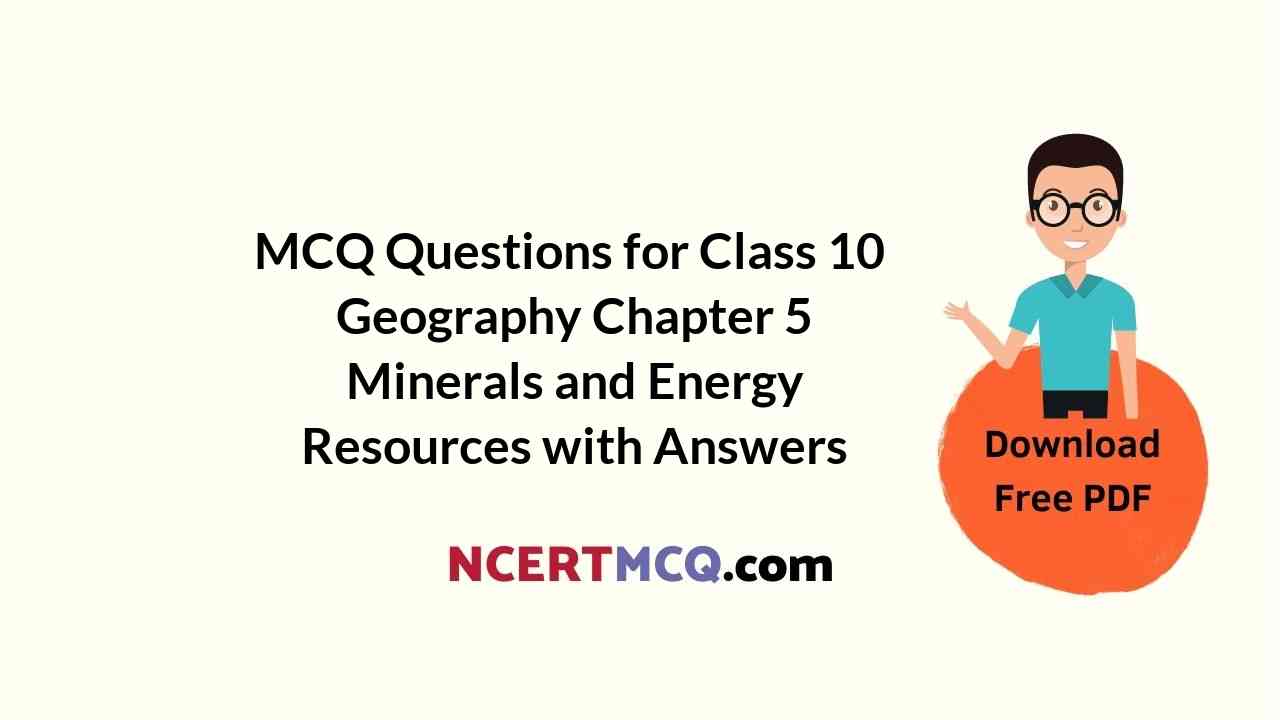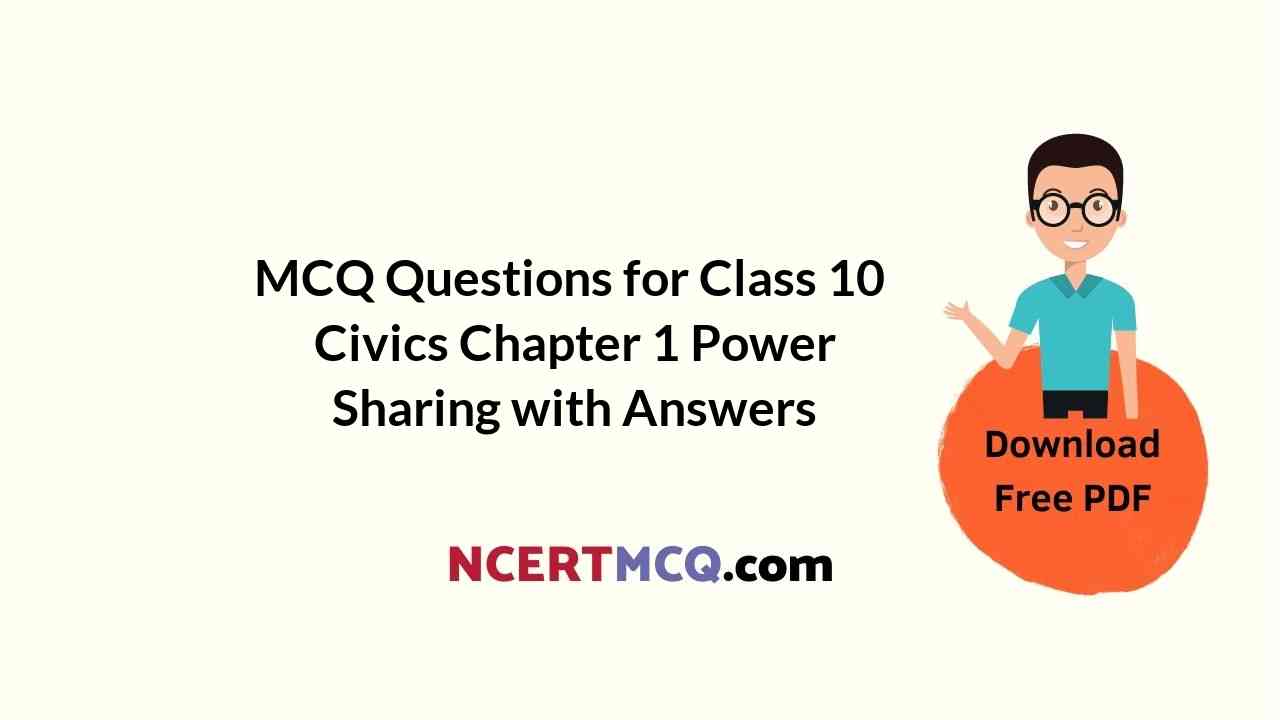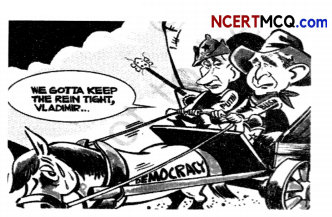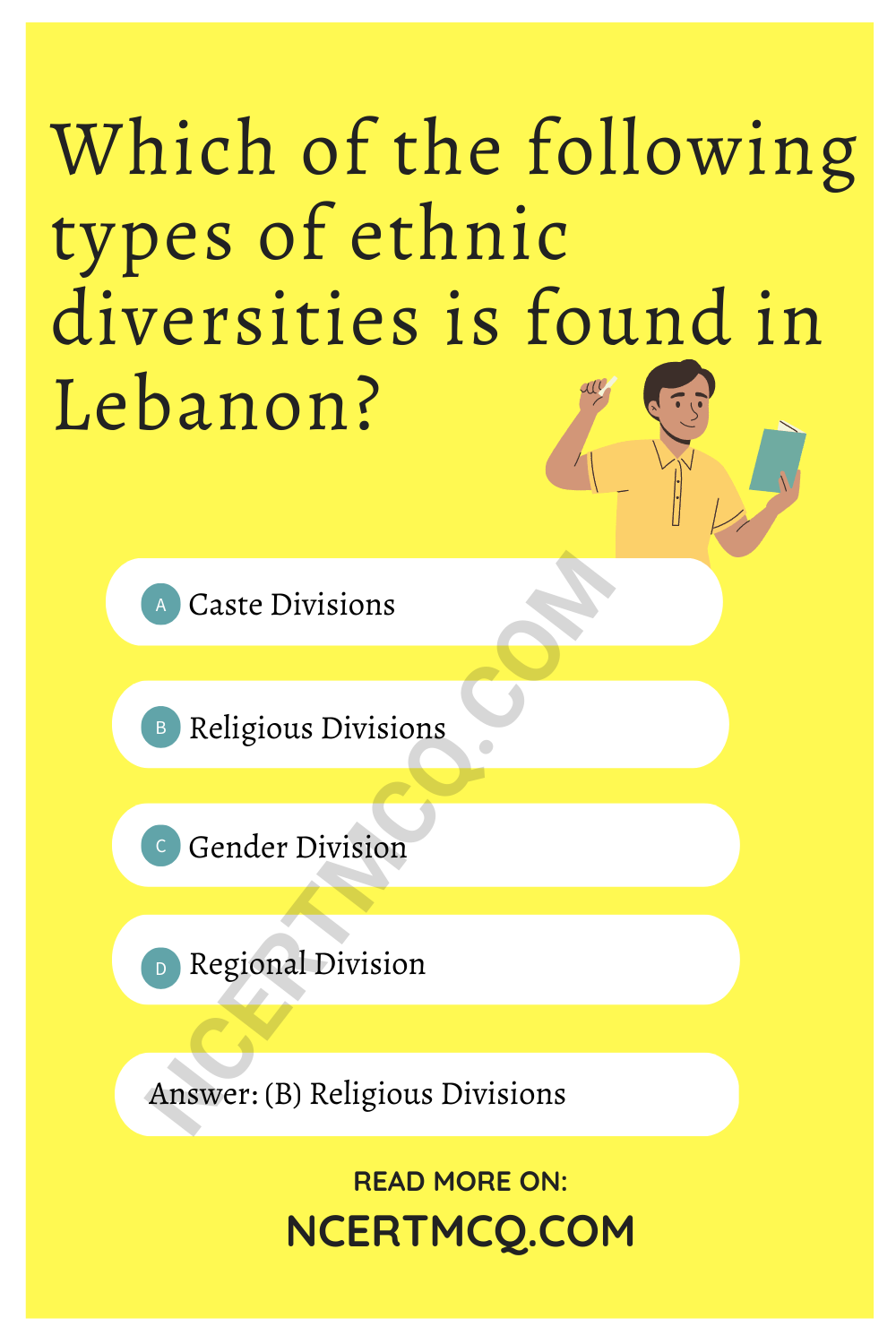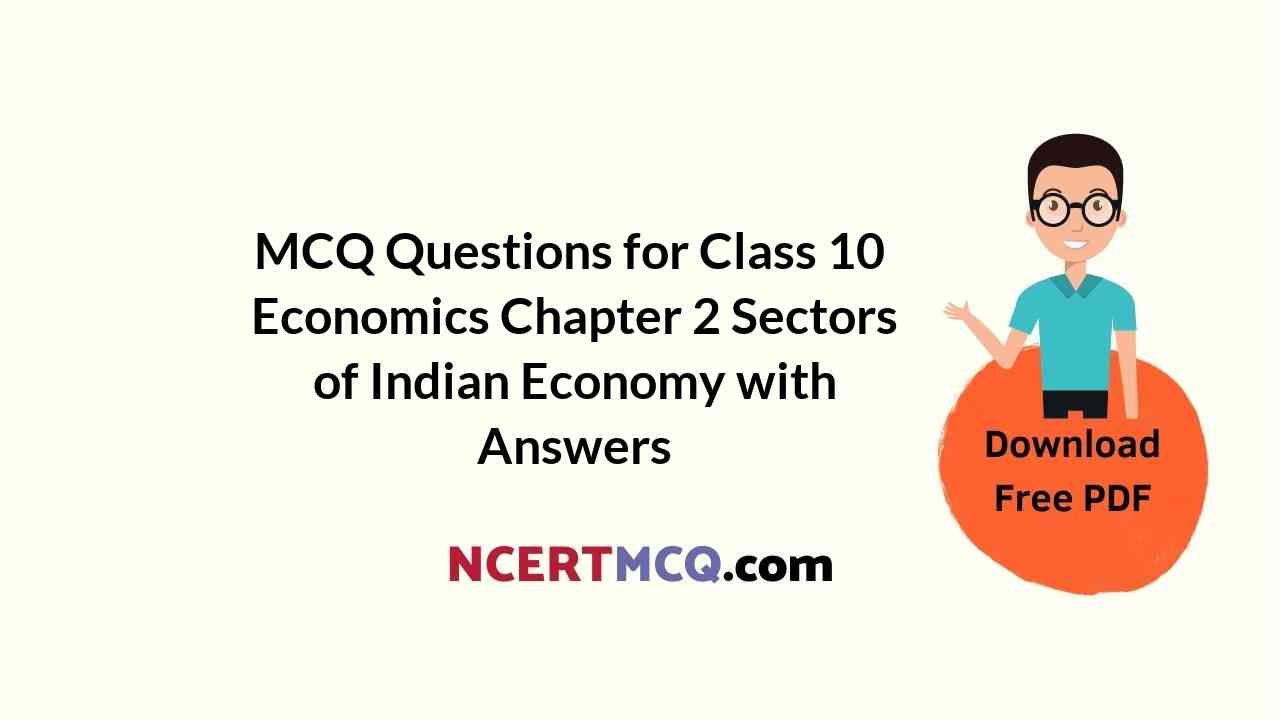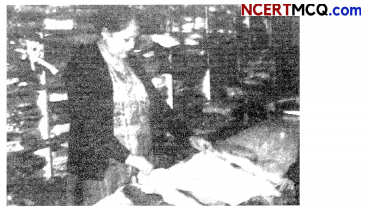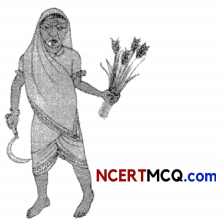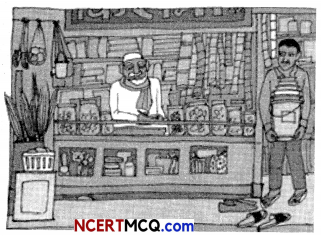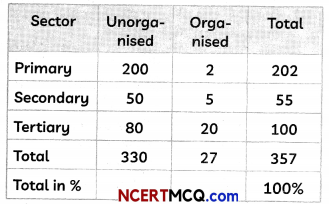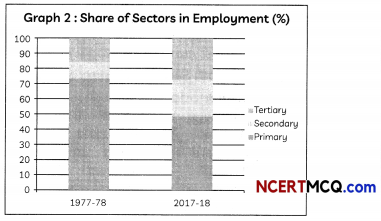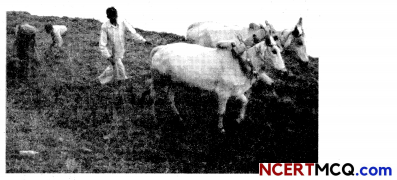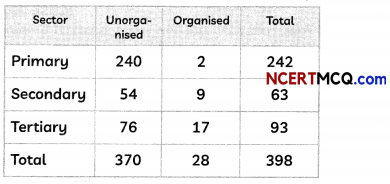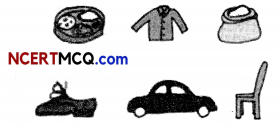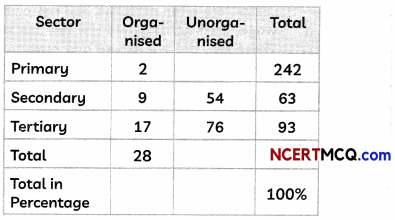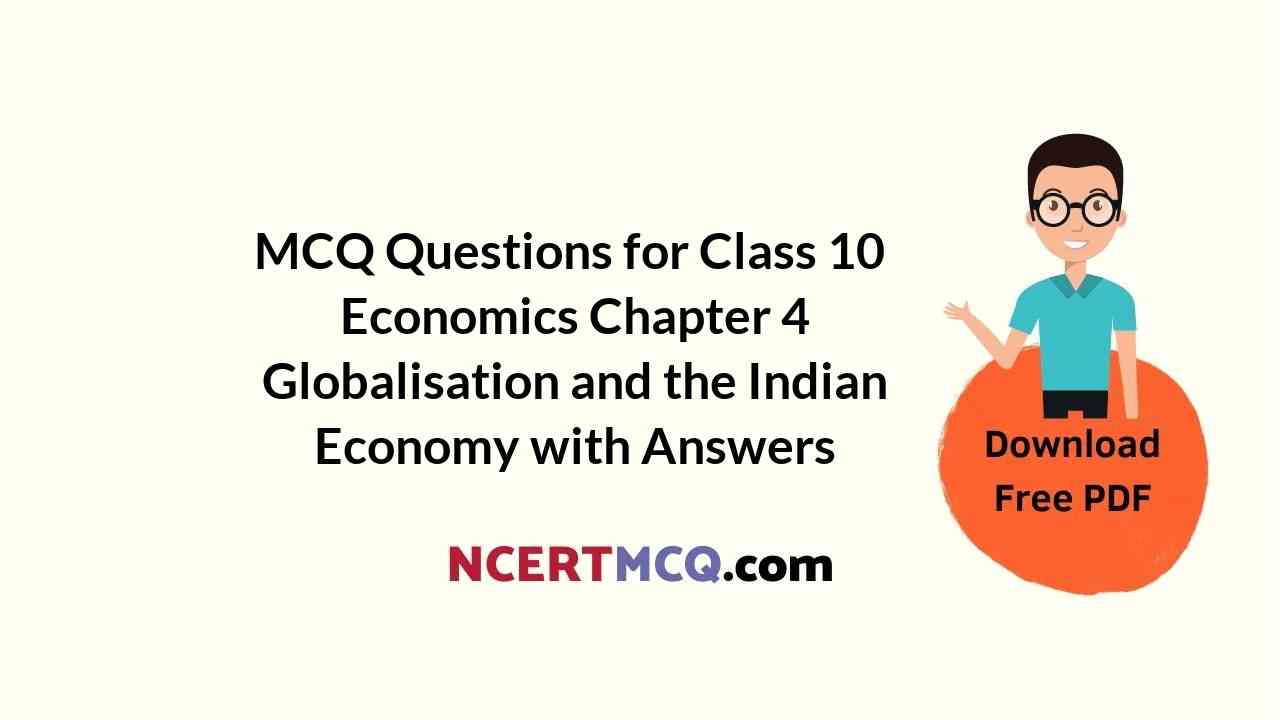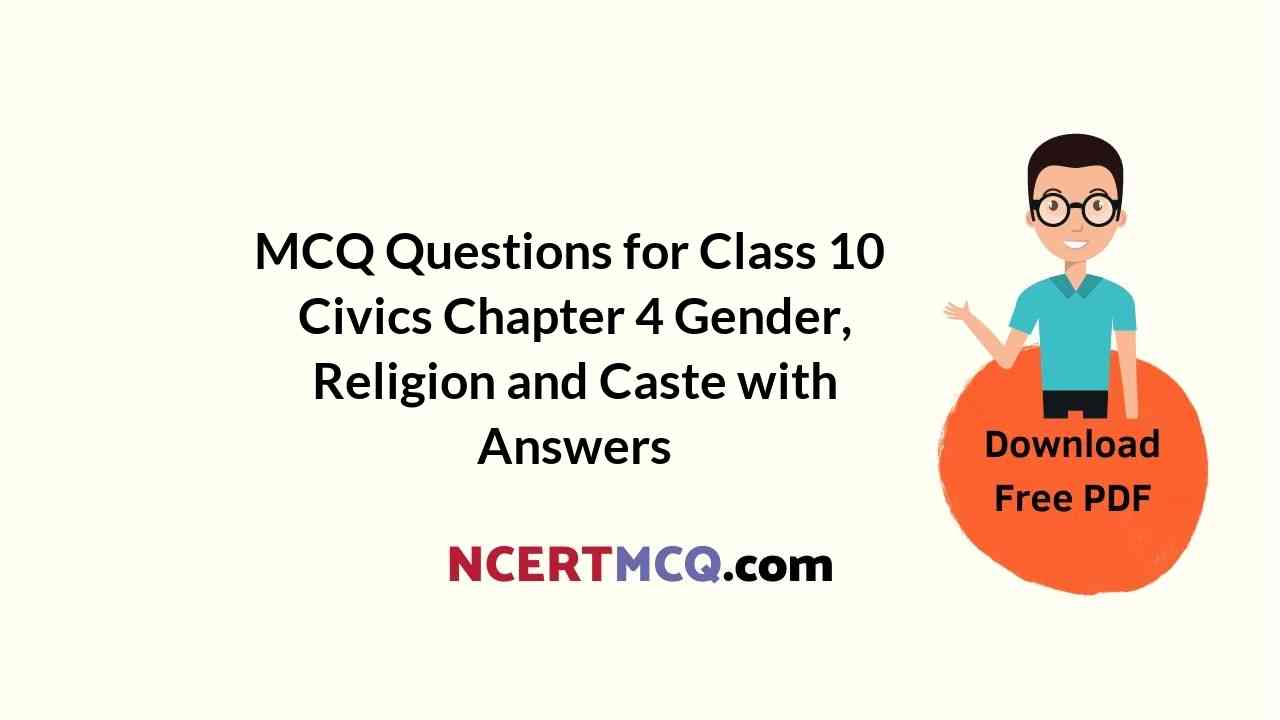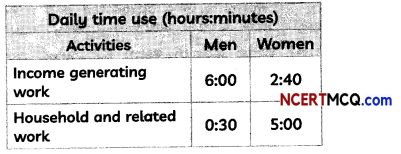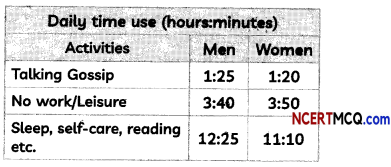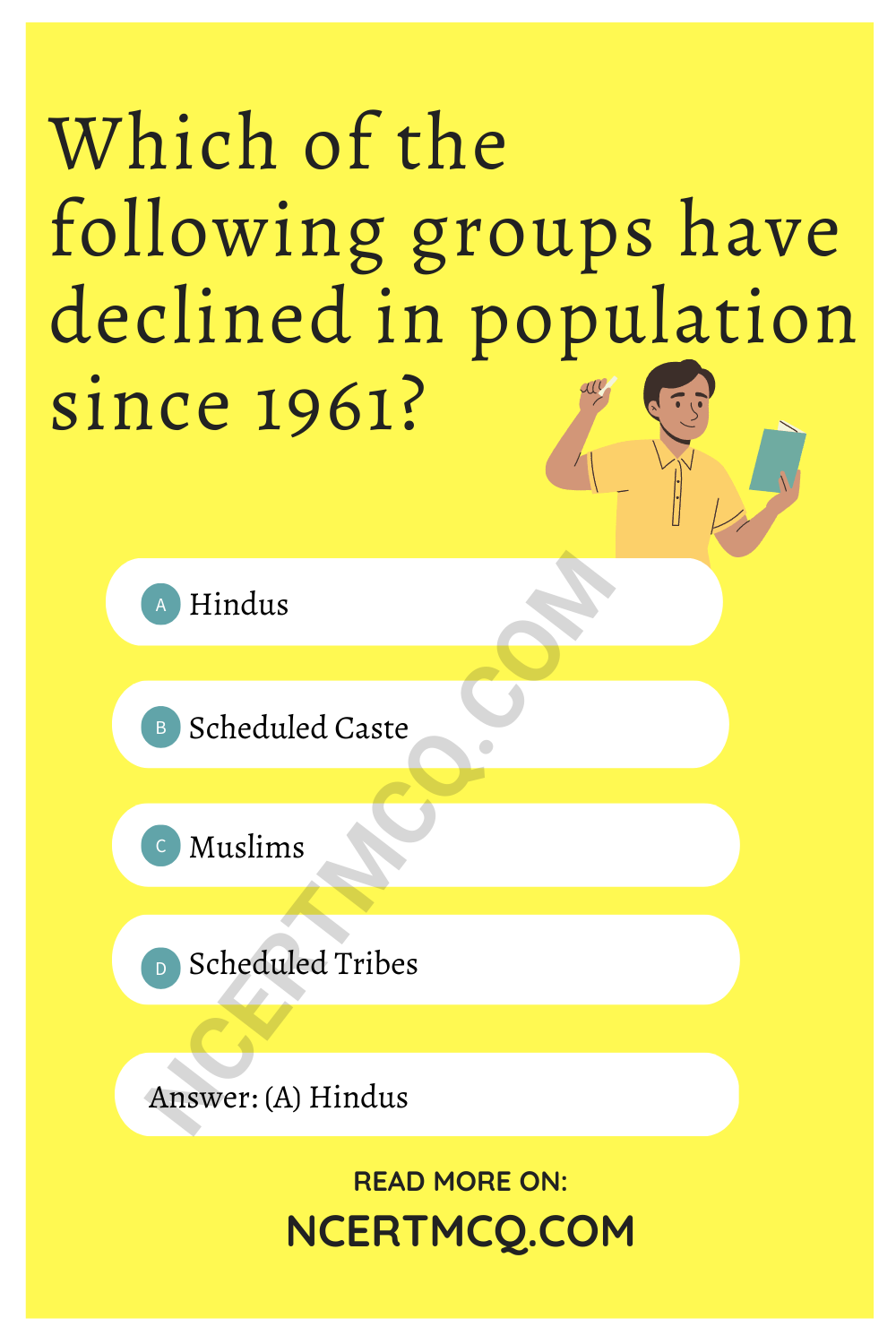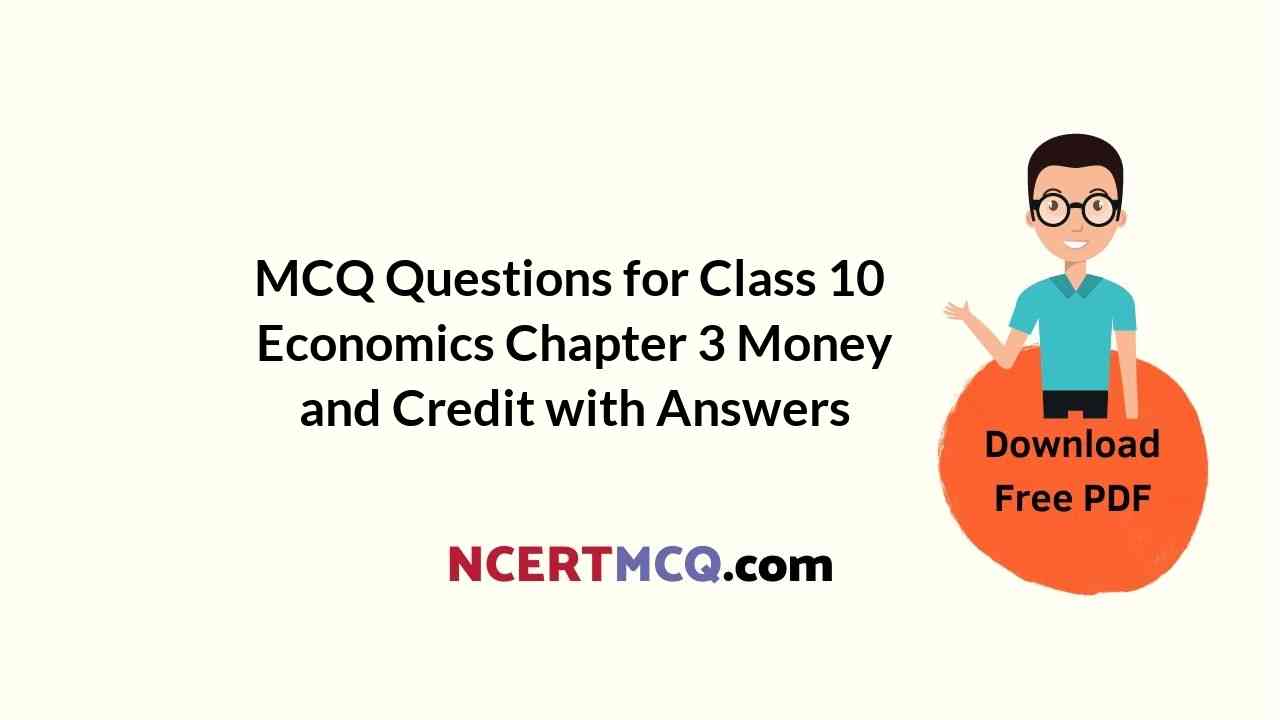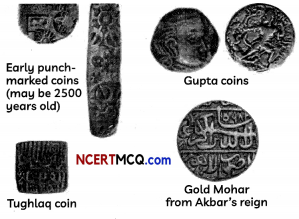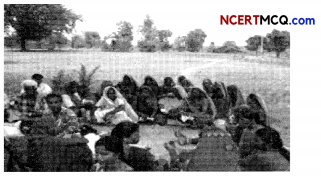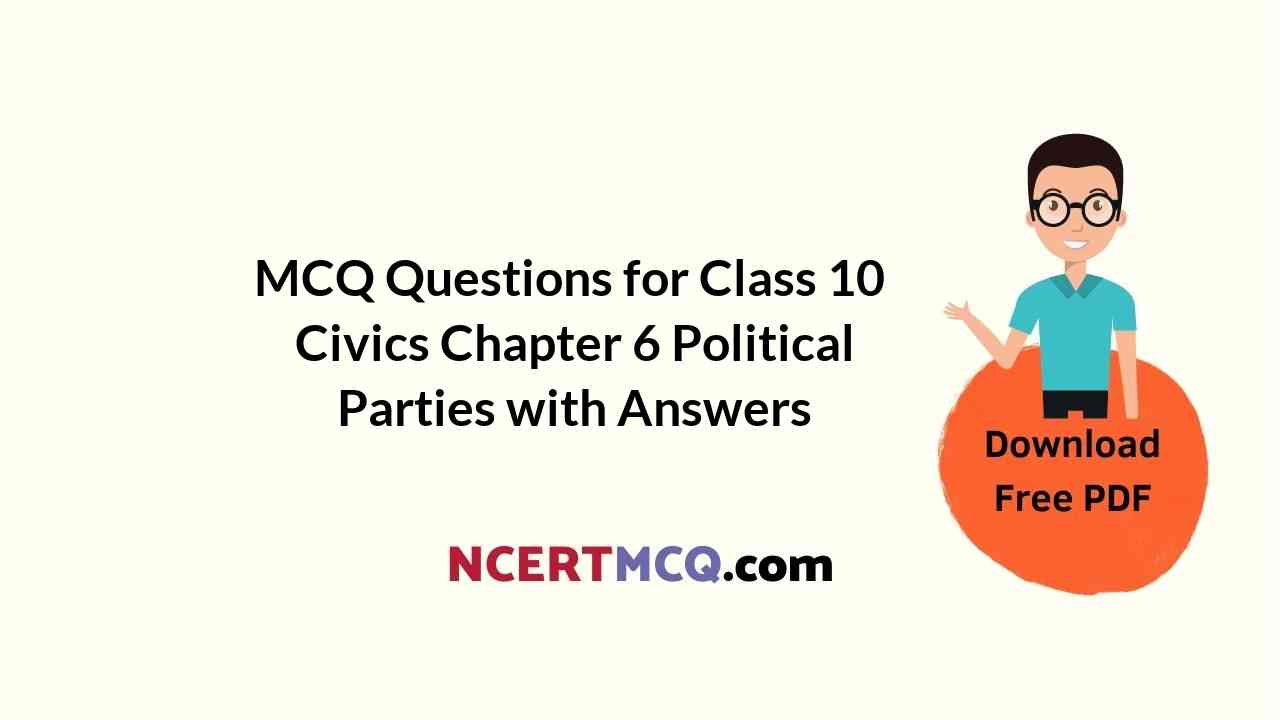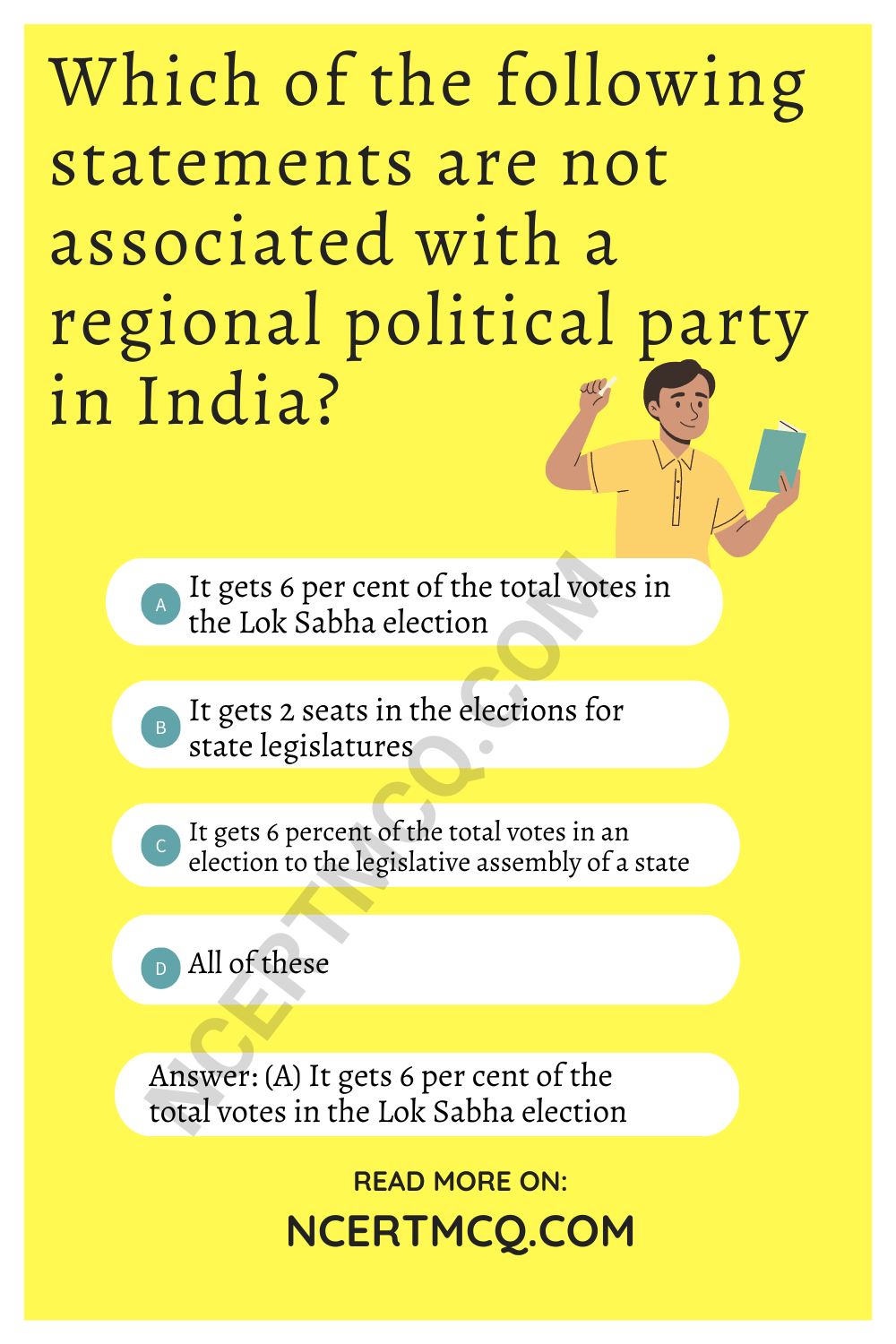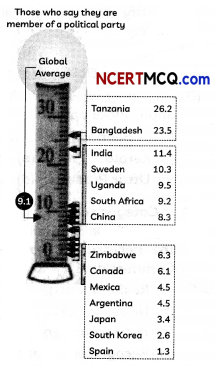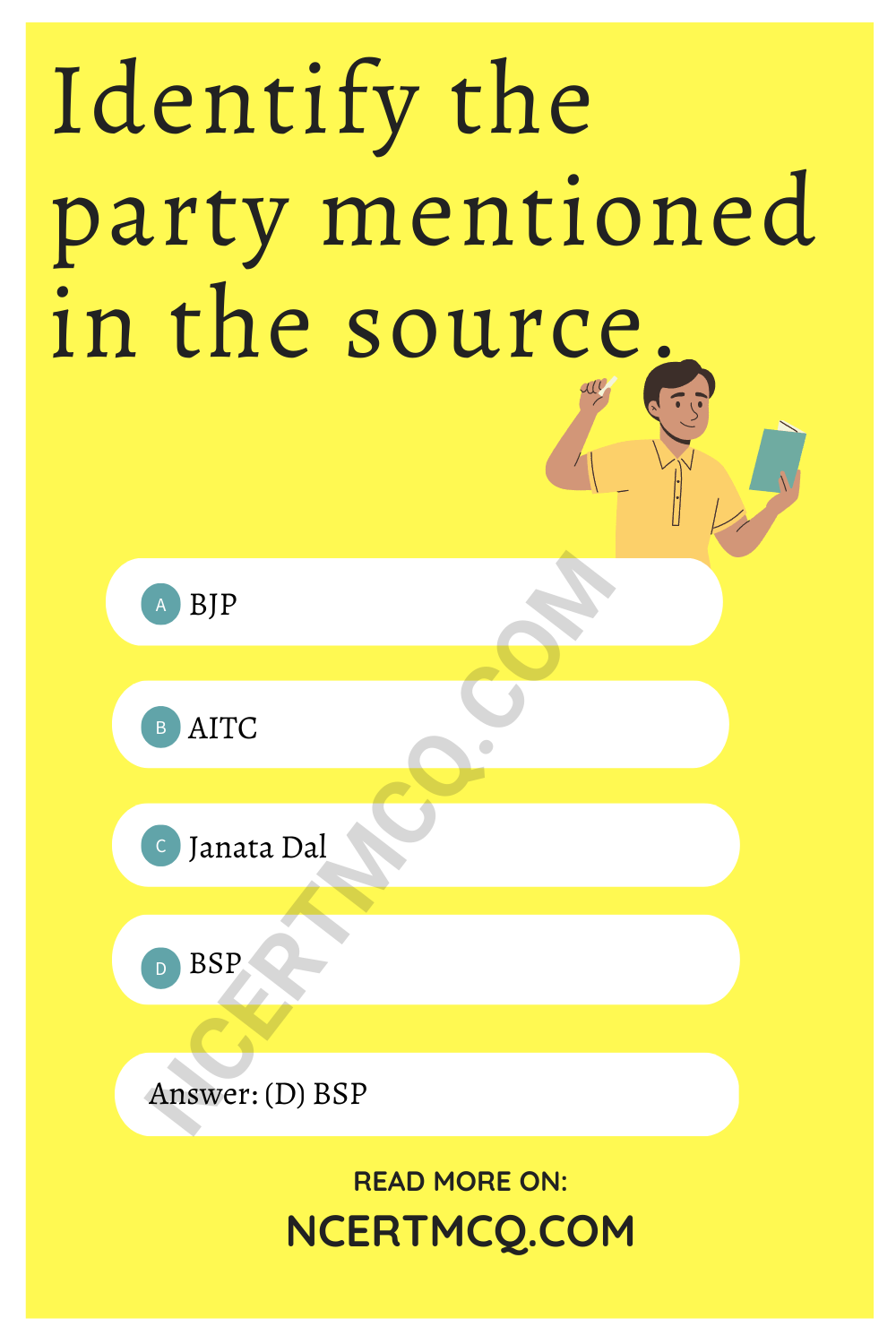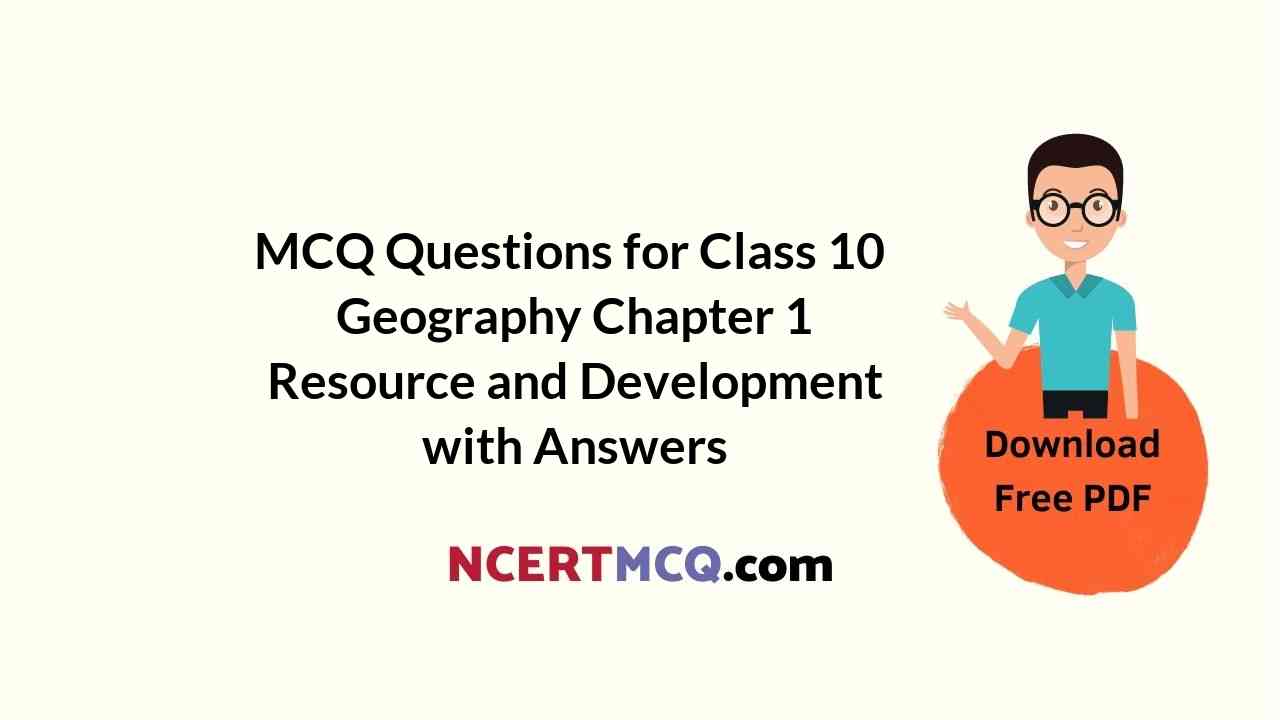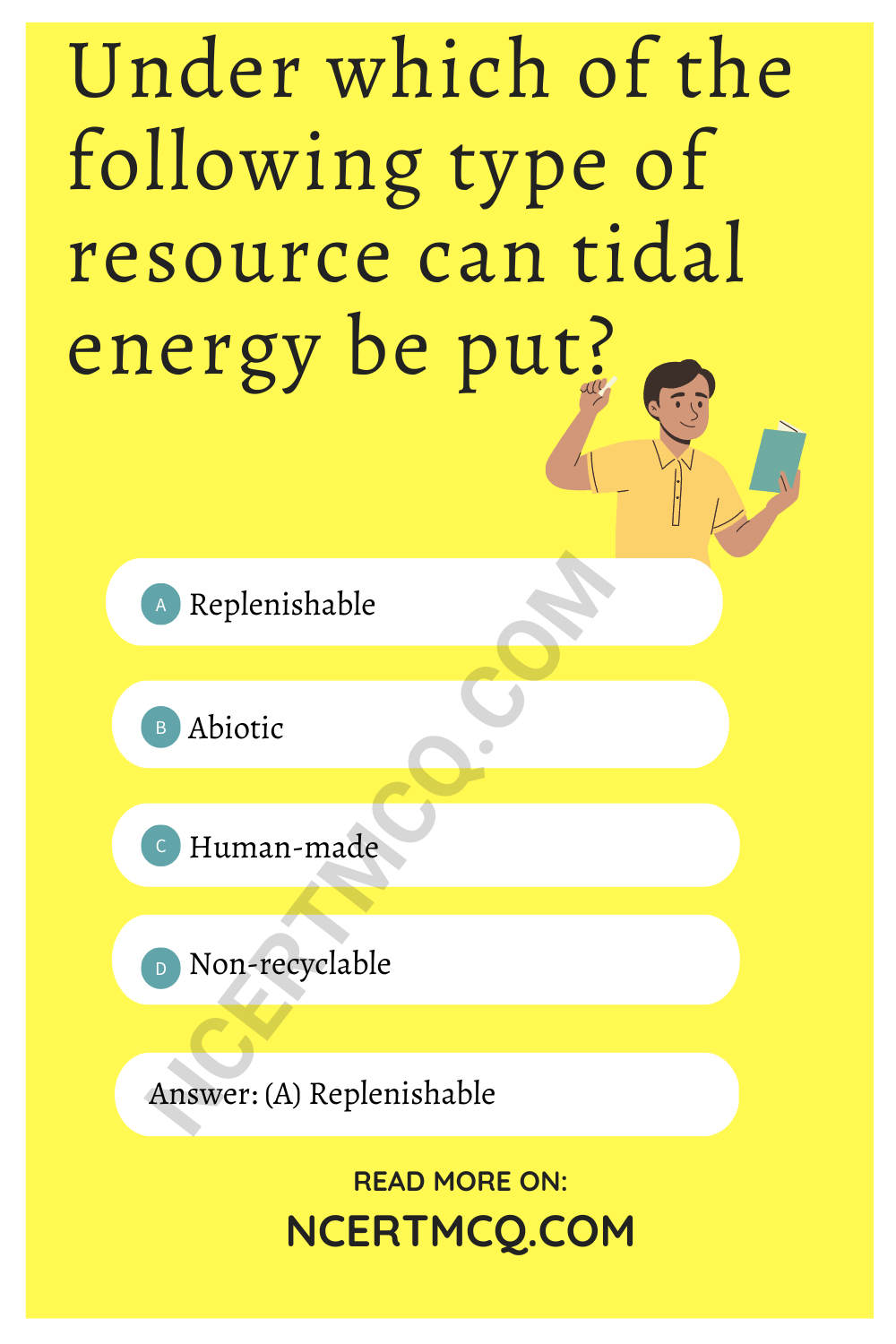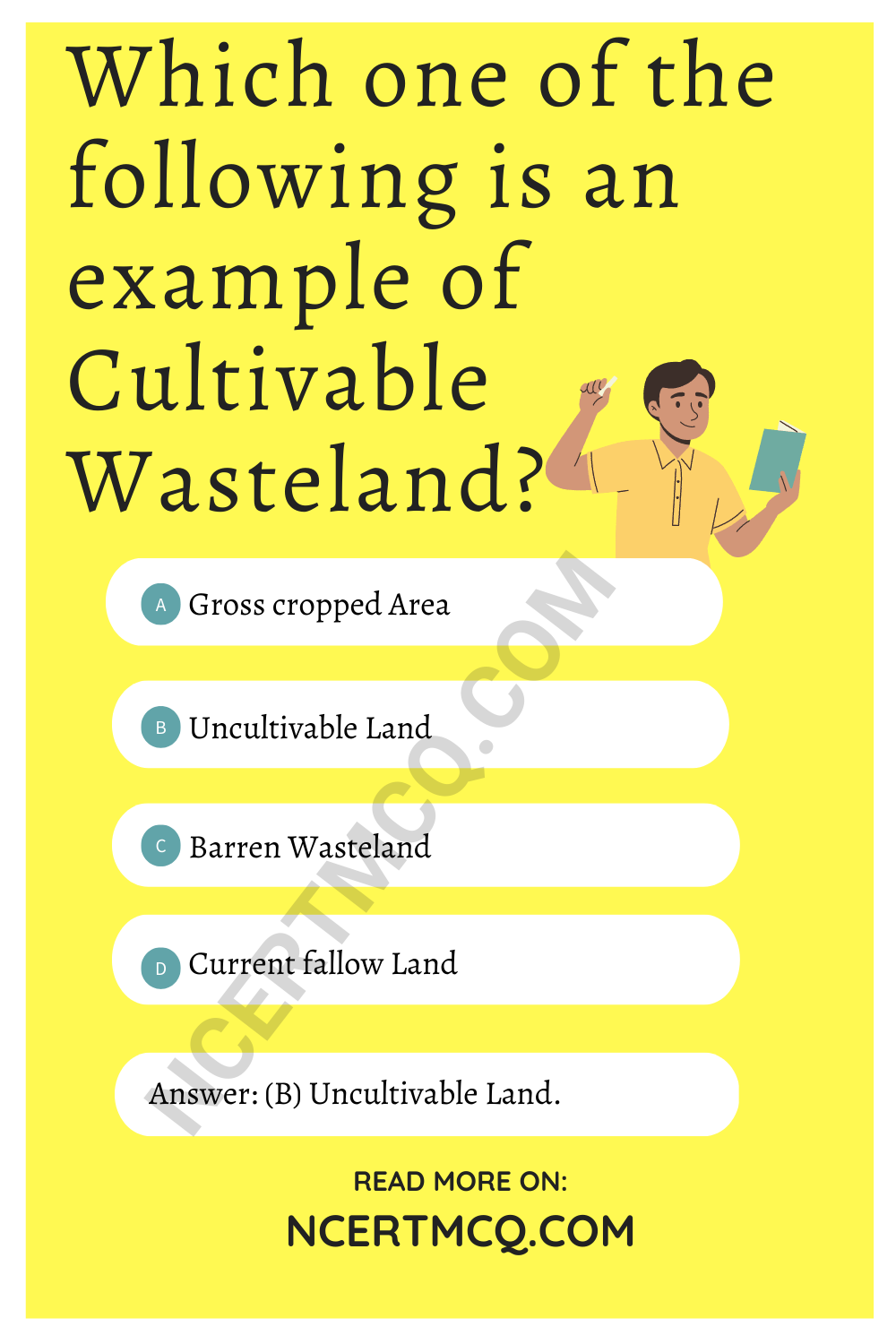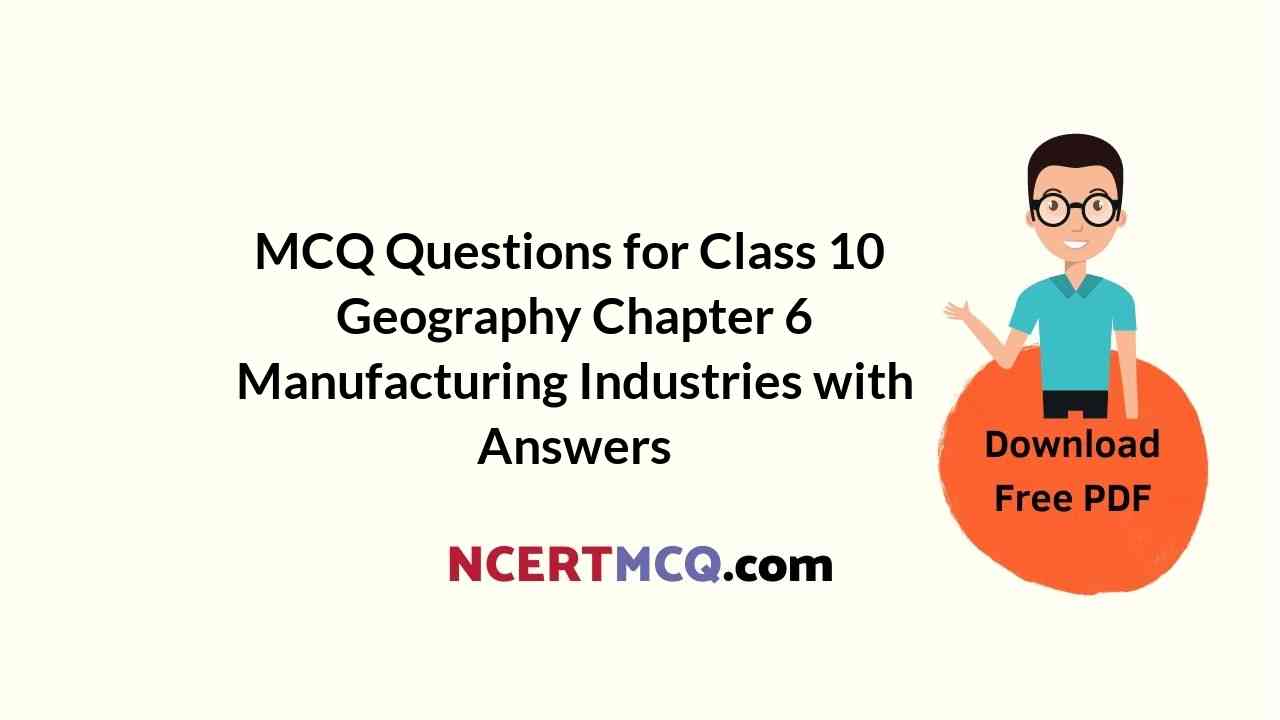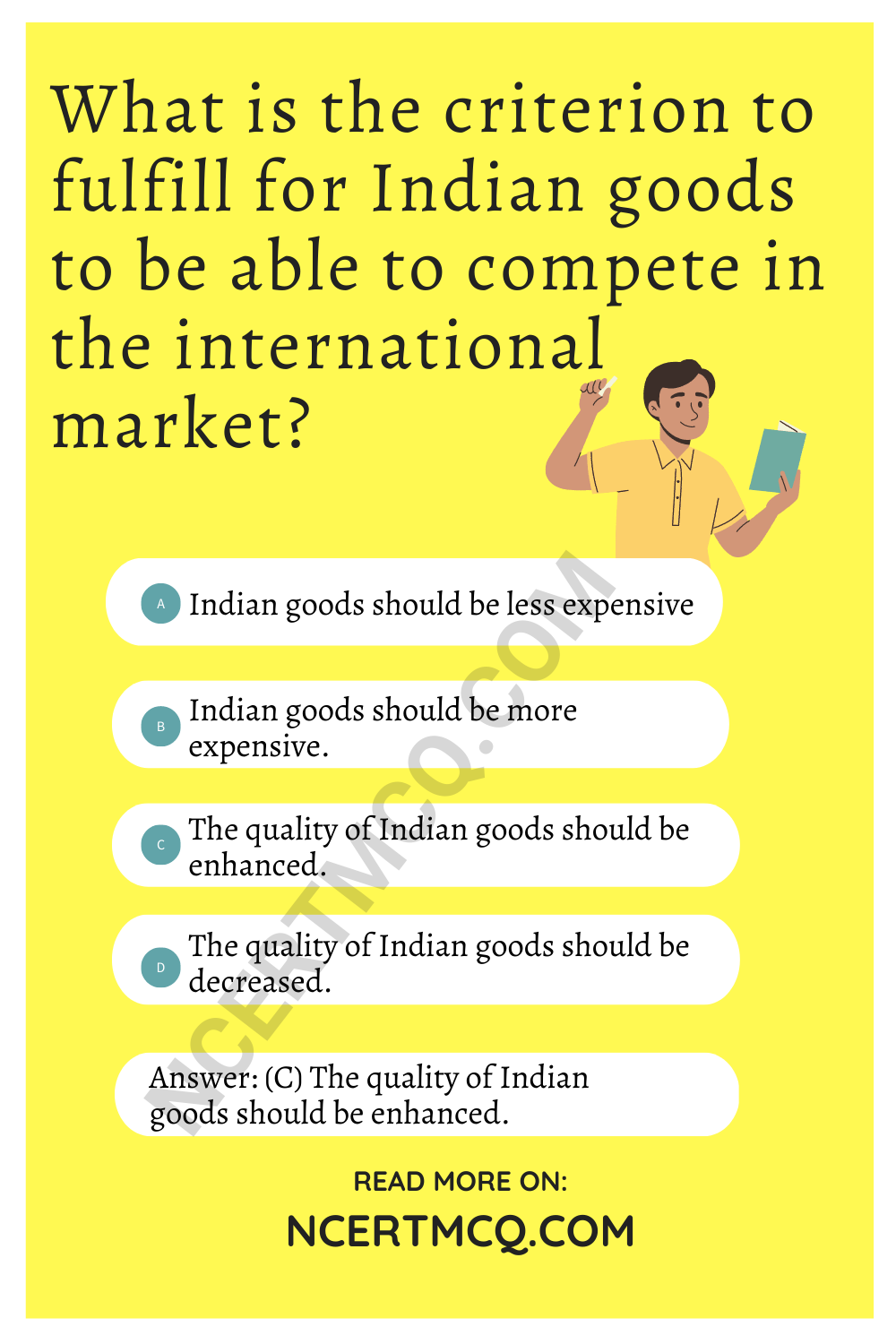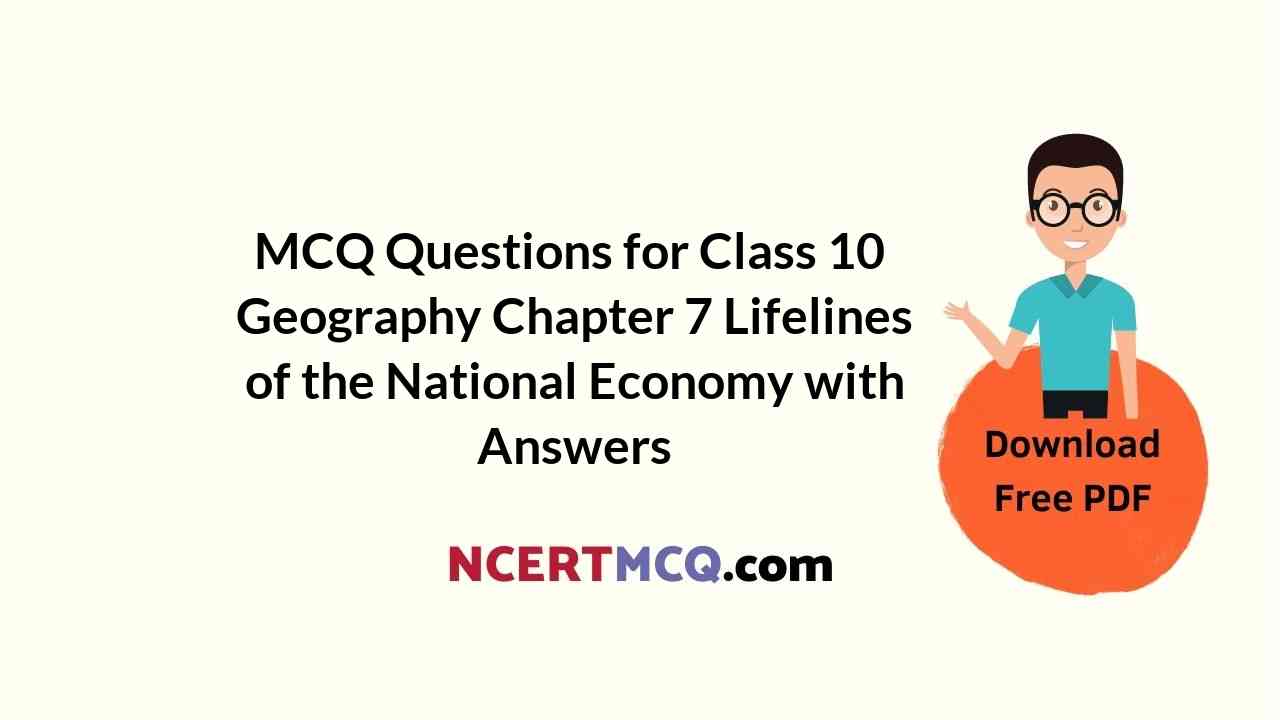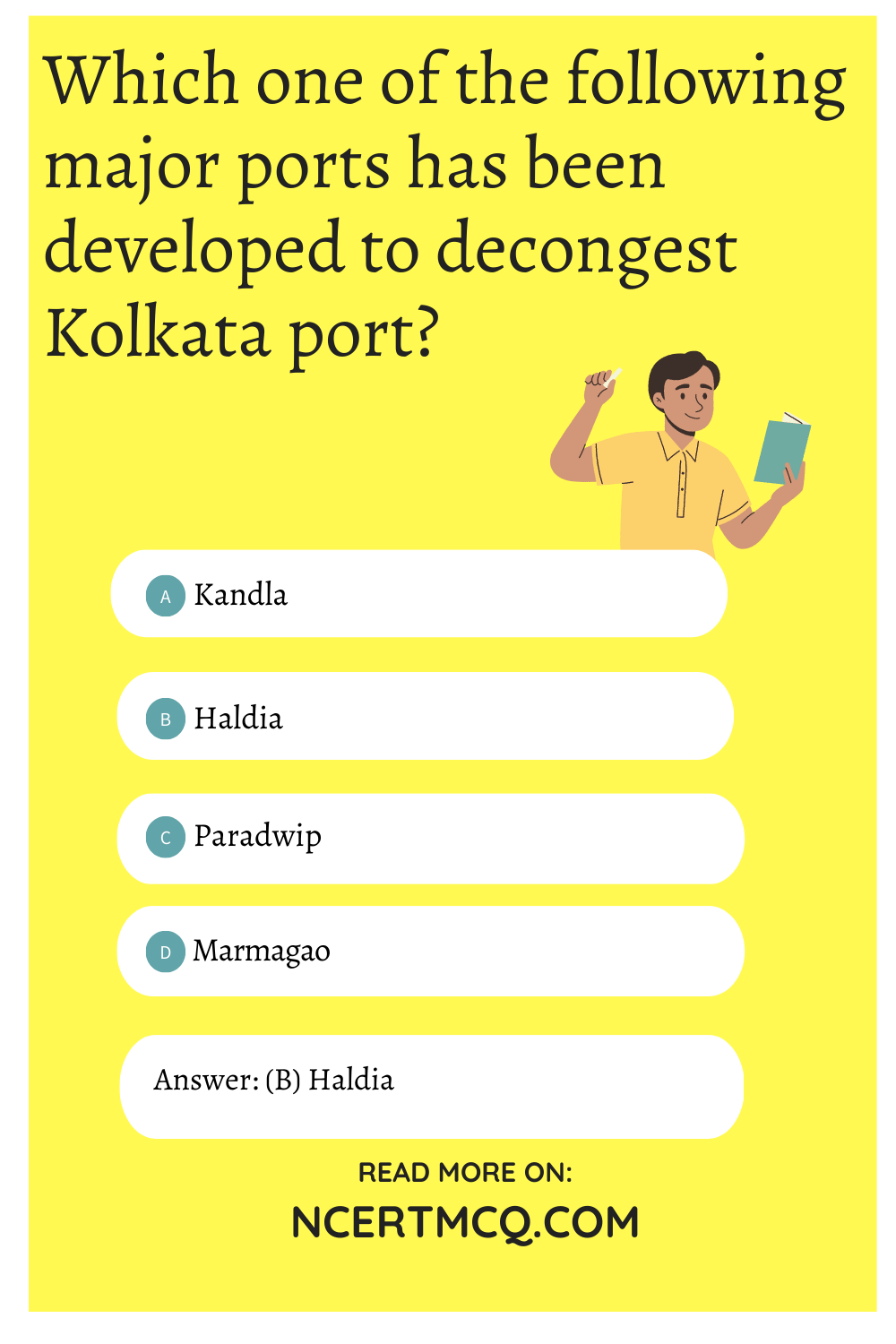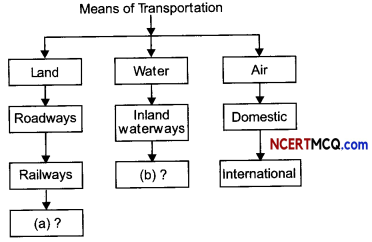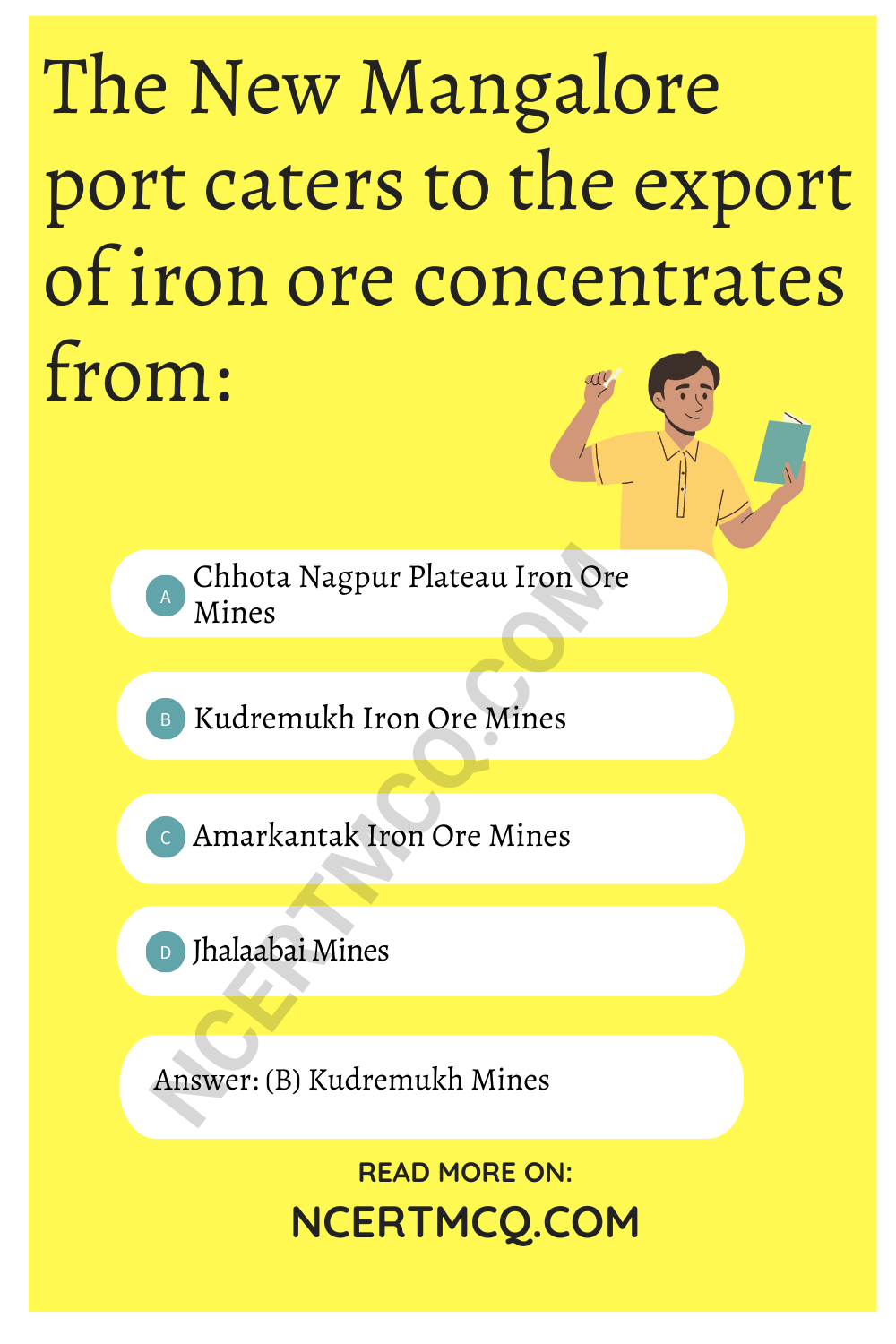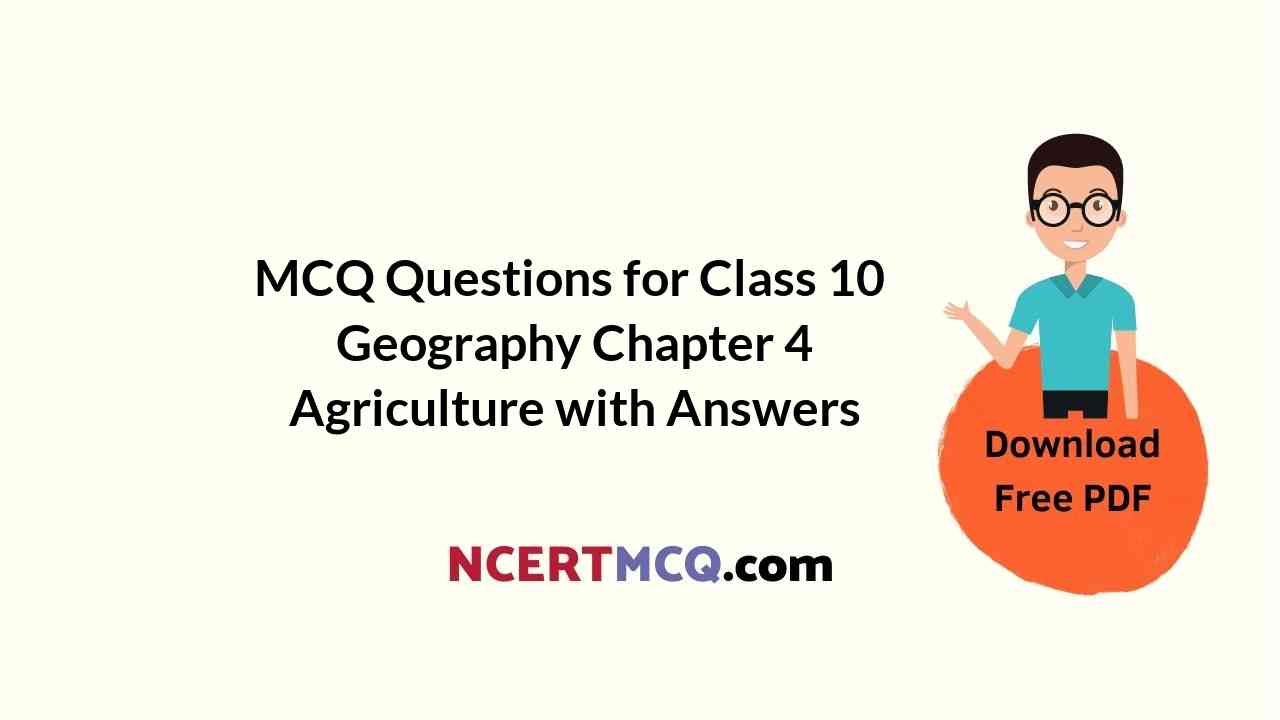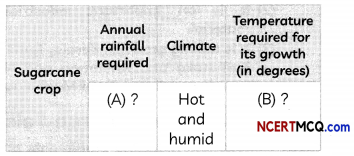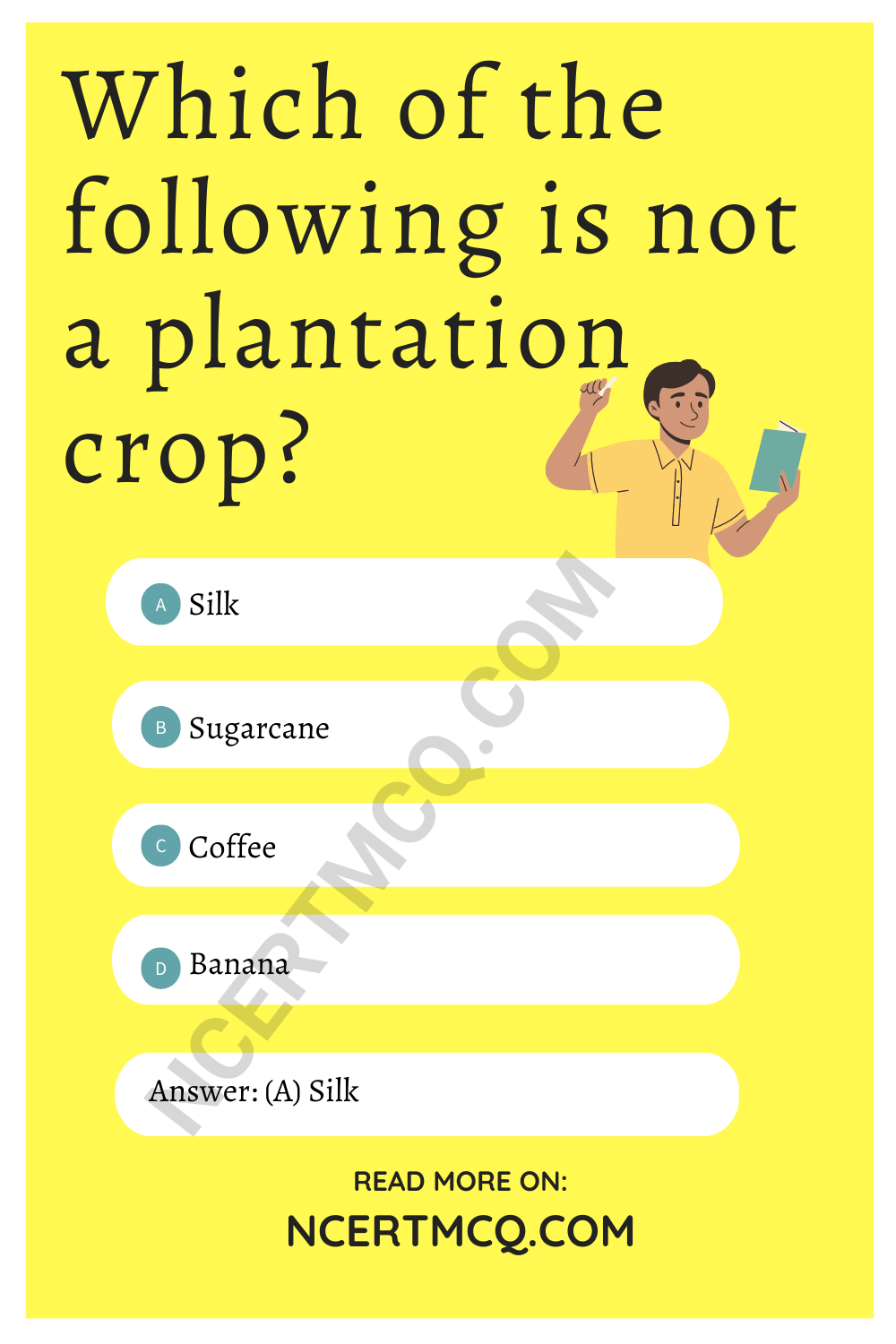Students can also read Online Education MCQ Questions for Class 10 Geography Chapter 5 Minerals and Energy Resources Questions with Answers hope will definitely help for your board exams. https://ncertmcq.com/mcq-questions-for-class-10-social-science-with-answers/
Class 10 Social Science Geography Chapter 5 MCQ With Answers
Geography Class 10 Chapter 5 MCQs On Minerals and Energy Resources
Minerals And Energy Resources Class 10 MCQ Question 1.
Which of the following minerals are not found in the toothpaste?
(a) Limestone
(b) Aluminium Oxide
(c) Fluoride
(d) Chlorides
Answer:
(d) Chtorides
Explanation: Abrasive minerals like silica, limestone, aluminium oxide and various phosphate minerals do the cleaning in toothpaste.
Class 10 Geography Chapter 5 MCQ With Answers Question 2.
Where does the shine in toothpaste come from?
(a) Fluoride
(b) Mica
(c) Limestone
(d) Titanium oxide
Answer:
(b) Mica
Minerals And Energy Resources MCQ Question 3.
Which of the following is a soft mineral?
(a) Diamond
(b) Iron
(c) Bauxite
(d) Talc
Answer:
(d) Talc
![]()
Mineral And Energy Resources Class 10 MCQ Question 4.
Fill in the blank by choosing the most appropriate option:
A ………….. is interested in the formation of minerals, their age and physical and chemical composition.
(a) Geographer
(b) Oceanology
(c) Geologist
(d) Environmentalist
Answer:
(c) Geologist
MCQ On Minerals And Energy Resources Class 10 Question 5.
Which one of the following is a non-metallic mineral?
(a) Manganese
(b) Copper
(c) Tin
(d) Mica
Answer:
(d) Mica
Explanation: Mica is a non-metallic mineral made up of a series of plates or leaves. It splits easily into thin sheets.
Class 10 Minerals And Energy Resources MCQ Question 6.
Which one of the following states is the largest producer of copper in India ?
(a) Orissa
(b) Karnataka
(c) Rajasthan
(d) Gujarat
Answer:
(c) Rajasthan
Explanation: The Balaghat mines in Madhya Pradesh, Khetri mines in Rajasthan and Singhbhum district of Jharkhand are leading producers of copper.
Mineral And Energy Resources MCQ Question 7.
Which one of the following is a feature of Mica?
(a) It is a rock mineral made up of a series of blocks.
(b) It is a milky and unclear non-metallic.
(c) It is used in the electric and electronic industry due to the excellent di-electric strength.
(d) It cannot be easily split into thin sheets.
Answer:
MCQ Of Minerals And Energy Resources Question 8.
Fill in the blank by choosing the most appropriate option:
Uranium and Thorium used for generating nuclear power are found in
(a) Gariga Basin
(b) Gulf of Khambhat and Cambay
(c) Manikarn in Himachal Pradesh
(d) Aravalli ranges of Rajasthan
Answer:
(d) Aravalli ranges of Rajasthan
Explanation: Uranium and Thorium are available in Jharkhand and the Aravalli ranges of Rajasthan are used for generating atomic or nuclear power.
Class 10 Geography Chapter 5 MCQ Question 9.
Which of the following is an offshore oil field?
(a) Ankleshwar
(b) Digboi
(c) Kalol
(d) Mumbai High
Answer:
![]()
MCQ Questions For Class 10 Geography Chapter 5 Question 10.
Which one of the following non- conventional sources of energy is harnessed near Manikarn in Himachal Pradesh?
(a) Geothermal Energy
(b) Wind energy
(c) Solar energy
(d) Hydel Energy
Answer:
(a) Geothermal Energy
Explanation: To harness geothermal energy, two projects have been set up. One is located in the Parvati valley near Manikarn in Himachal Pradesh and the other is located in the Puga Valley, Ladakh.
MCQ Minerals And Energy Resources Question 11.
Which of the following states have most of the petroleum deposits?
(a) Rajasthan and Kerala
(b) Assam and Gujarat
(c) Gujarat and Goa
(d) Odisha and Punjab
Answer:
(b) Assam and Gujarat
Explanation: Sedimentary rocks on the western and eastern flanks of the peninsula, in Gujarat and Assam have most of the petroleum deposits.
Chapter 5 Geography Class 10 MCQ Question 12.
The Kaiga Nuclear Energy Plant is located in which of the following states?
(a) Uttar Pradesh
(b) Karnataka
(c) Himachal Pradesh
(d) Kerala
Answer:
MCQ On Minerals And Energy Resources Question 13.
Fill in the blank by choosing the most appropriate option:
Gondwana coal deposits are found in
(a) Krishna valley
(b) Damodar valley
(c) Brahmaputra delta
(d) Tapi valley
Answer:
(b) Damodar valley
Explanation: The Godavari, Mahanadi, Son and Wardha valleys also contain coal deposits.
MCQs On Minerals And Energy Resources Question 14.
Which of the following parts or states do the Tertiary Coal deposits occur in?
(a) Coastal and Seaside states
(b) the Northern States
(c) North-eastern states
(d) Eastern states
Answer:
(c) North-eastern states
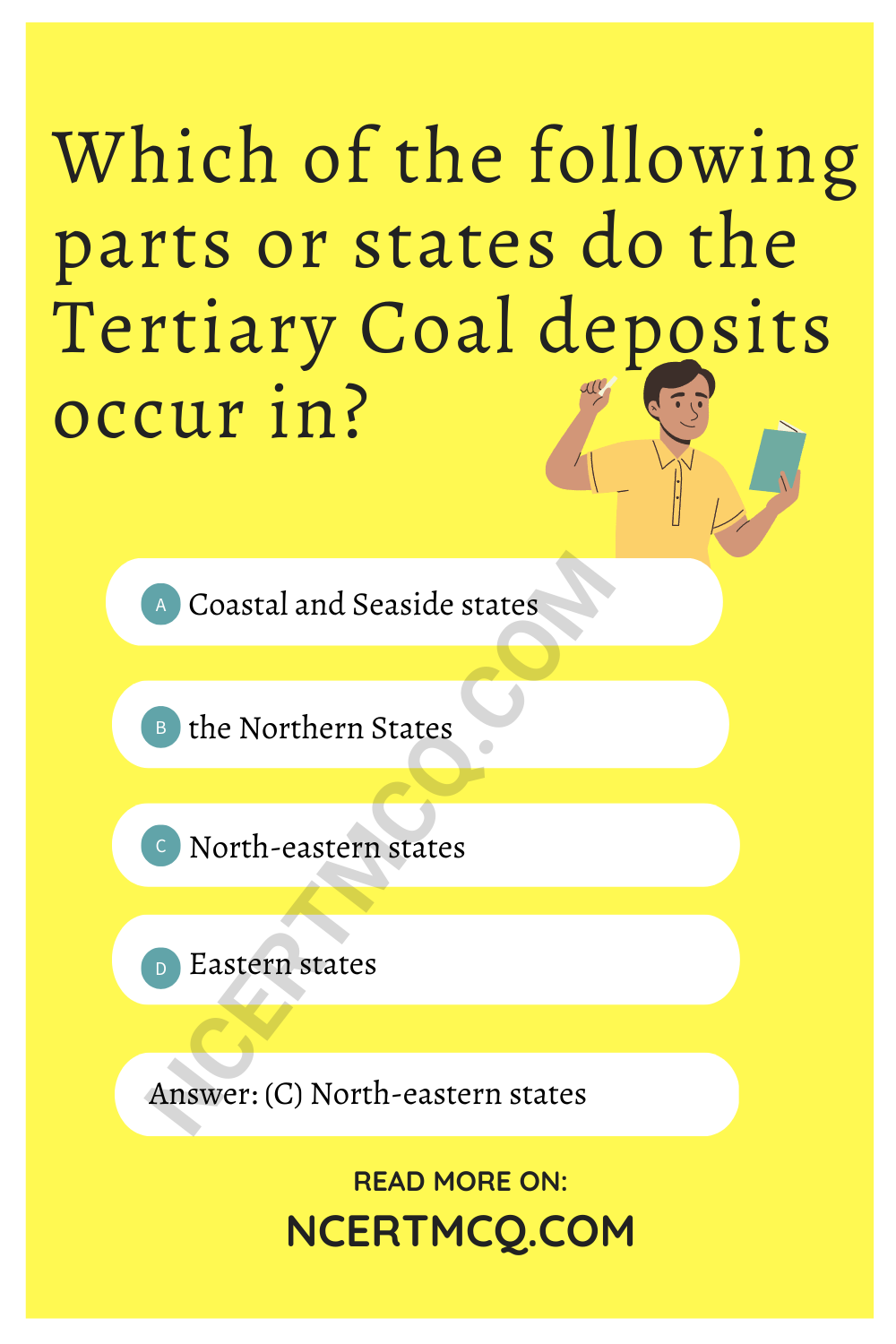
Explanation: Tertiary coals occur in the north-eastern states of Meghalaya, Assam, Arunachal Pradesh and Nagaland.
![]()
Minerals And Energy Resources Class 10 MCQ With Answers Question 15.
What are the large occurrences of minerals in cracks, crevices, faults in igneous and metamorphic rocks called?
(a) Layers
(b) Veins
(c) Lodes
(d) Chamber
Answer:
(c) Lodes
Explanation: In igneous and metamorphic . rocks minerals may occur in the cracks, crevices, faults or joints. The smaller occurrences are called veins and the larger are called lodes.
Question 16.
Where are the Neyveli lignite mines located?
(a) Goa
(b) Tamil Nadu
(c) Kerala
(d) Andhra Pradesh
Answer:
(b) Tamil Nadu
Explanation: Principal lignite reserves are in Neyveli in Tamil Nadu and are used for generation of electricity.
Question 17.
Which form of coal has a low carbon and high moisture contents and low heating capacity?
(a) Peat
(b) Lignite
(c) Anthracite
(d) Bituminous
Answer:
(a) Peat
Question 18.
Which one of the following minerals is not obtained from the veins and lodes?
(a) Tin
(b) Zinc
(c) Lead
(d) Gypsum
Answer:
(d) Gypsum
Explanation: Major metallic minerals like tin, copper, zinc and lead etc. are obtained from veins and lodes.
Question 19.
In which of the following states is Khetri Copper Mines located ?
(a) Rajasthan
(b) Tamil Nadu
(c) Uttar Pradesh
(d) Punjab
Answer:
(a) Rajasthan
Explanation: The Balaghat mines in Madhya Pradesh, Khetri mines in Rajasthan and Singhbhum district of Jharkhand are leading producers of copper.
Question 20.
In which of the following state is the Narora Nuclear Power Plant located ?
(a) Karnataka
(b) Kerala
(c) Tamil Nadu
(d) Uttar Pradesh
Answer:
![]()
Question 21.
Fill in the blank by choosing the most appropriate option:
Most of India’s mineral reserves are found in
(a) Himalayan region
(b) Coastal region
(c) Peninsular rocks
(d) Plain region
Answer:
(c) Peninsular rocks
Explanation: Peninsular rocks contain most of the reserves of coal, metallic minerals, mica and many other non-metallic minerals.
Question 22.
Which one of the following minerals is largely derived from ocean water?
(a) Aluminium
(b) Magnesium
(c) Gold
(d) Copper
Answer:
(b) Magnesium
Question 23.
In which of the following state is Kalpakkam Nuclear Power Plant located?
(a) Gujarat
(b) Odisha
(c) Kerala
(d) Tamil Nadu
Answer:
(d) Tamil Nadu
Question 24.
Choose the correctly matched pair from the following:
(a) Kalol Oil Fields
(b) Bauxite Mines
(c) Chandrapur Thermal Power Plant
(d) Mayurbhanj Iron Ore Mines
Identify the following on basis of the hints given.
Question 25.
Identify the process:
(1) This type of mining is done in Jowai and Cherrapunji.
(2) Mining is carried out by family members in the form of a long narrow tunneL
(3) The National Green Tribunal has declared this activity illegal.
Answer:
Rat Hole Mining
![]()
Question 26.
Identify the mineral:
(1) It is the basic mineral and the backbone of industrial development.
(2) India has fairly abundant resources of this mineraL
(3) Magnetite is one type of this mineraL
Answer:
Question 27.
Identify the mineral:
(1) It is a clay-like substance that alumina and later aluminium is obtained from.
(2) These deposits are formed by the decomposition of a wide variety of rocks rich in aluminium silicates.
(3) They are found in Amarkantak plateau, Maikal hills and the plateau region of Bilaspur-Katni.
Answer:
Bauxite deposits
Correct and Rewrite/ True-False
State whether the following statements are True or False. If false, correct the statement.
Question 28.
The geological processes of mineral formation are so fast and rates of replenishment are quick in comparison to the present rates of consumption.
Answer:
True
The geological processes of mineral formation are slow and rates of replenishment are lesser in comparison to the present rates of consumption.
Question 29.
Aluminium splits easily into thin sheets.
Answer:
False
Mica splits easily into thin sheets.
Explanation: Mica is a mineral made up of a series of plates or leaves. It splits easily into thin sheets.
Question 30.
Limestone is found in sedimentary rocks of most geological formations.
Answer:
True
Question 31.
Every sector of the national economy except for agriculture needs inputs of energy.
Answer:
Question 32.
Hot springs in India could be used to generate petroleum.
Answer:
False
Hot springs in India could be used to generate electricity,
Explanation: Groundwater absorbs heat from the rocks and becomes hot. Later, it rises to the earth’s surface and turns into steam. This steam is used to drive turbines and generate electricity.
![]()
Question 33.
Gangetic delta in Sunderban regions of West Bengal provide ideal conditions for utilising tidal energy.
Answer:
True
Question 34.
Hydel energy refers to the heat and electricity produced by using the heat from the interior of the Earth.
Answer:
False
Geothermal energy refers to the heat and electricity produced by using the heat from the interior of the Earth.
Question 35.
India does not have enough reserves of sunlight, water, wind and biomass.
Answer:
Question 36.
Solar power plants minimise the dependence of urban households on firewood and dung cakes.
Answer:
False
Solar power plants minimise the dependence of rural households on firewood and dung cakes.
Explanation: Rural households use dung cakes, firewood and other resources of energy which become harmful for nature upon overuse since they are dependent upon forests. Solar power plants help reduce this pressure.
Question 37.
Petroleum is also found in fault traps between porous and non-porous rocks.
Answer:
True
Question 38.
Lignite is the highest grade brown coal, which is soft with high moisture content.
Answer:
![]()
Question 39.
Some minerals like limestone consist of a single mineral
Answer:
True
Fill in the blanks with suitable information:
Question 40.
…………. Is well known for effective use of wind energy ¡n Rojasthan.
Answer:
Jaisalmer/Nagercoil
Question 41.
Coal and petroLeum are …………. sources of energy.
Answer:
Non-renewable sources
Question 42.
Titanium oxide comes from minerals called Rutile, ilmenite and ……………………….
Answer:
Anatase
Question 43.
The toothbrush and tube containing the paste are made of plastics from ……………………
Answer:
Question 44.
……………… study minerals for o better understanding of Landforms.
Answer:
Question 45.
In …………. rocks, minerals may occur in the cracks, crevices, faults or joints
Answer:
Igneous and metamorphic rocks
Question 46.
In ………………. there are large deposits of coat which are mined by the process of Rat Hole mining.
Answer:
Meghalaya
![]()
Question 47.
……………………… ore is the most important industrial iron ore in terms of the quantity used.
Answer:
Question 48.
Rajasthan has reserves of……………………….
Answer:
Non-ferrous minerals
Question 49.
Kudre of the Kudremukh ValLey in Kannada means
Answer:
Horse
Explanation: The highest peak of the Kudremukh ValLey in the western ghats of Karnotaka resembles the face of a horse.
Question 50.
Manganese is used in the manufacturing of …………….and ferro-manganese alloy.
Answer:
Steel
Question 51.
……………… was the largest bauxite producing state in India in 2016-17.
Answer:
Odisha
![]()
Question 52.
Photovoltaic technology converts sunlight directly into………………….
Answer:
Electricity
Match the Columns Choose the correct pairs:
Question 53.
Match the items in Column A with that of Column B.
| Column A (minerals/energy sources) | Column B (areas/sources) |
| (A) Bauxite | (I) KrishnaGodavari basin |
| (B) Natural energy | (II) Damodar Valley Corporation |
| (C) Petroleum | (III) Panchpotmali deposits |
| (D) Electricity | (IV) Ankleshwar |
Answer:
| Column A (minerals/energy sources) | Column B (areas/sources) |
| (A) Bauxite | (III) Panchpotmali deposits |
| (B) Natural energy | (I) Krishna-Godavari basin |
| (C) Petroleum | (IV) Ankleshwar |
| (D) Electricity | (II) Damodar Valley Corporation |
Question 54.
Match the items in CoLumn A with that of Column B.
| Column A (minerals/energy sources) | Column B (areas/sources) |
| (A) Biogas | (I) Monozite Sands |
| (B) Tidal Energy | (II) Rural areas of the country |
| (C) Atomic Energy | (III) Nagercoil |
| (D) Wind power | (IV) Nagercoil |
Answer:
| Column A (minerals/energy sources) | Column B (areas/sources) |
| (A) Biogas | (II) Rural areas of the country |
| (B) Tidal Energy | (IV) Nagercoil |
| (C) Atomic Energy | (I) Monozite Sands |
| (D) Wind power | (III) Nagercoil |
Question 55.
Match the items In Column A with that of Column B.
| Column A (Belt) | Column B (areas) |
| (A) Odisha-Jharkhand belt | (I) Karnatako |
| (B) Durg-Bastar-Chandrapur belt | (II) Ratnagiri |
| (C) Bailan-Chitradurga-Chikkomagoluru-Tumakuru belt | (III) Mayurbhanj |
| (D) Maharashtra-Goa belt | (IV) Chhattisgarh |
Answer:
![]()
Question 56.
Match the items in Column A with that of Column B.
| Column A (Source) | Column B (Energy/Resource) |
| (A) Kudremukh valley | (I) Natural Gas |
| (B) Balaghat mines | (II) Iron Ore |
| (C) Andaman and Nicobar Islands Energy | (III) Geothermal |
| (D) Parvati Valley | (IV) Copper |
Answer:
| Column A (Source) | Column B (Energy/Resource) |
| (A) Kudremukh valley | (II) Iron Ore |
| (B) Balaghat mines | (IV) Copper |
| (C) Andaman and Nicobar Islands Energy | (I) Natural Gas |
| (D) Parvati Valley | (III) Geothermal |
Question 57.
Match the items in CoLumn A with that of Column B.
|
Column A (Resource) |
Column B (Category) |
| (A) Potash | (I) Non-Ferrous Mineral. |
| (B) Tin | (II) Energy Resource |
| (C) Manganese | (III) Non-metallic Mineral |
| (D) Coal | (IV) Metallic Mineral |
Answer:
|
Column A (Resource) |
Column B (Category) |
| (A) Potash | (III) Non-metallic Mineral |
| (B) Tin | (I) Non-Ferrous Mineral. |
| (C) Manganese | (IV) Metallic Mineral |
| (D) Coal | (II) Energy Resource |
Question 58.
Match the items of Column A to that of Column B. Choose the correct option.
|
Column A |
Column B |
| (A) Mayurbhanj Iron Ore Mines | (I) Maharashtra |
| (B) Chandrapura Thermal Power Plant | (II) Odisha |
| (C) Bauxite Mines | (III) Gujarat |
| (D) Kolot Oil Fields | (IV) Amarkantok Plateau |
Answer:
(a) (A)-(II), (B)-(IV), (C)-(I), (D)-(II)
(b) (A)-(II), (B)-(I), (C)-(IV), (D)-(III)
(c) (A)-(IIl), (B)-(I), (C)-(IV), (D)-(II)
(d) (A)-(I), (B)-(III), (C)-(II), (D)-(I)
Assertion Reasoning questions Class 10 Geography Chapter 5
In each of the following questions, a statement of Assertion (A) is given followed by a corresponding statement of Reason (R). Select the correct answer to codes (a), (b), (c) or (d) as given betow
(a) Both (A) and (R) are true and (R) is the correct explanation of (A).
(b) Both (A) and (R) are true but (R) is not the correct explanation of (A).
(c) (A) is correct but (R) is wrong.
(d) (A) is wrong but (R) is correct.
Question 59.
Assertion (A): The mineral content of the ore must be in sufficient concentration to make its extraction commercially viable.
Reason (R): Cost of extraction is determined by the type of formation or structure which mineral ores may be mined.
Answer:
Question 60.
Assertion (A): Biogas is the most efficient use of cattle dung.
Reason (R): It reduces the quality of manure.
Answer:
(c) (A) is correct but (R) is wrong.
Explanation: It improves the quality of manure.
![]()
Question 61.
Assertion (A): Promotion of energy conservation and increased use of renewable energy sources are the twin planks of sustainable energy.
Reason (R): It is necessary to develop a sustainable path of energy development.
Answer:
(c) (A) is correct but (R) is wrong.
Question 62.
Assertion (A): Oceanic tides cannot be used to generate electricity.
Reason (R): Tidal energy can be used to run turbines and thereafter generate electricity.
Answer:
(d) (A) is wrong but (R) is correct.
Explanation: Oceanic tides can be used to generate electricity. Floodgate dams are built across inlets. During high tide, water flows into the inlet and gets trapped when the gate is closed. After the tide falls outside the flood gate, the water retained by the floodgate flows back to the sea via a pipe that carries it through a power-generating turbine.
Question 63.
Assertion (A): Groundwater absorbs heat from the rocks and becomes hot.
Reason (R): Geothermal energy exists because the Earth grows progressively hotter with increasing depth. This heat warms the water.
Answer:
(a) Both (A) and (R) are true and (R) is the correct explanation of (A).
Question 64.
Assertion (A): Energy saved is energy produced.
Reason (R): Judicious use of our limited energy resources helps in the development of future generations.
Answer:
(a) Both (A) and (R) are true and (R) is the correct explanation of (A).
(Competency Based Questions (CBQs))
Question 1.
Read the source given below and answer the questions that follow:
In igneous and metamorphic rocks minerals may occur in the cracks, crevices, faults or joints. The smaller occurrences are called veins and the larger are called lodes. In most cases, they are formed when minerals in liquid/ molten and gaseous forms are forced upward through cavities towards the earth’s surface. They cool and solidify as they rise. Major metallic minerals like tin, copper, zinc and lead etc are obtained from veins and lodes.
Answer the following MCQs by choosing the most appropriate option:
(A) Which of the following minerals are found in veins and lodes?
(a) Copper
(b) Limestone
(c) Zinc
(d) Lead
Answer:
(b) Limestone
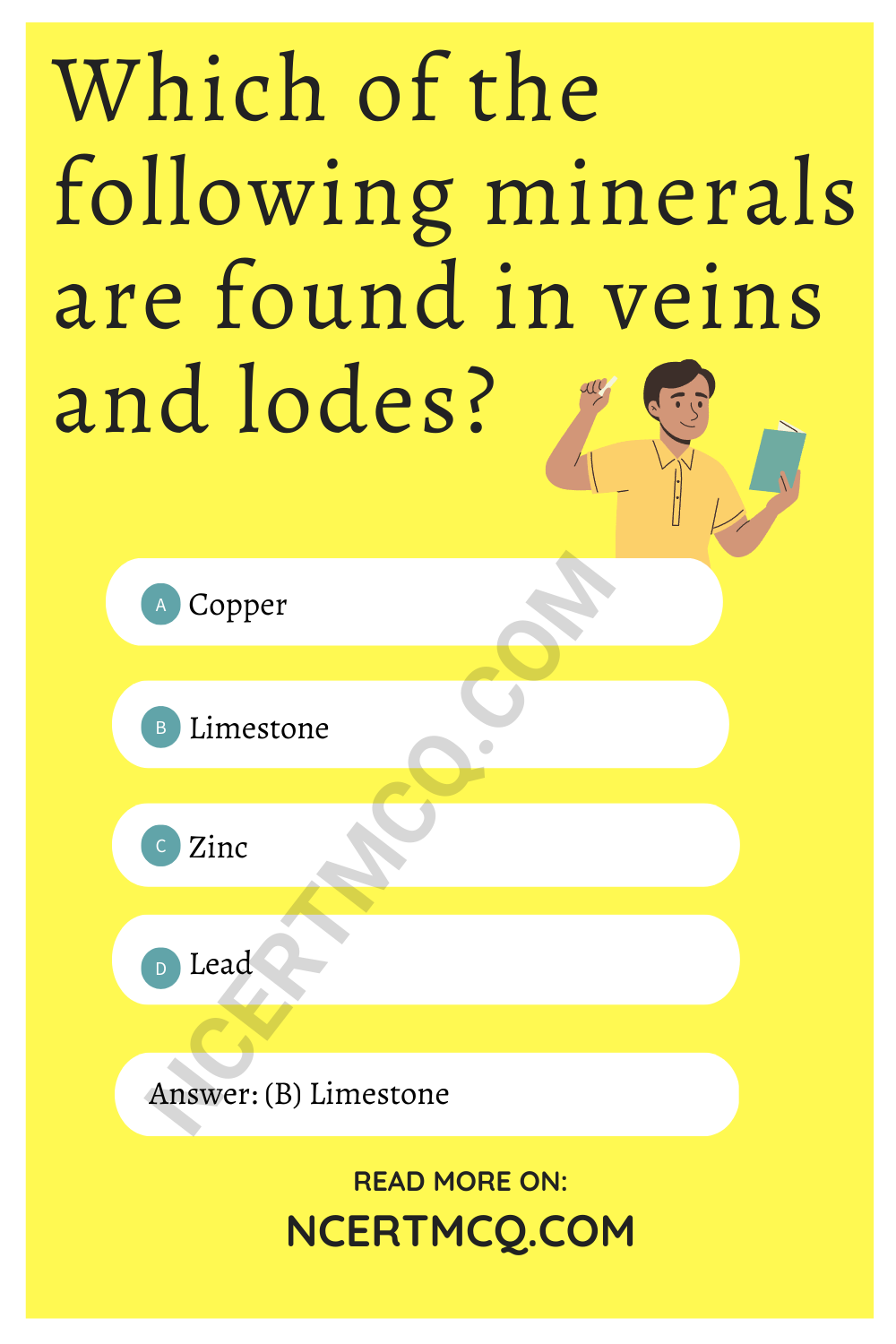
(B) Which of the following forms do the igneous and metamorphic minerals occur in?
(a) Beds
(b) Cracks
(c) Lodes
(d) Faults
Answer:
(a) Beds
Explanation: Sedimentary rocks occur in beds or layers.
(C) Which of the following statements are not true for Igneous and Metamorphic rocks?
(a) Igneous rocks are found in joints of rocks.
(b) They are found in their solidified forms.
(c) They are pushed out of earth in their liquid/molten and gaseous forms.
(d) They are formed as a result into deposition.
Answer:
(D) Fill in the blank by choosing an appropriate option:
Lodes are occurrences.
(a) Smaller
(b) Larger
(c) Huge
(d) Negligible
Answer:
(b) Larger
Explanation: The smaller occurrences of minerals are called veins and the larger are called lodes.
![]()
Question 2.
Read the source given below and answer the questions that follow:
India is fortunate to have fairly rich and varied mineral resources. However, these are unevenly distributed. Broadly speaking, peninsular rocks contain most of the reserves of coal, metallic minerals, mica and many other non-metallic minerals. Sedimentary rocks on the western and eastern flanks of the peninsula. have
most of the petroleum deposits. Rajasthan with the rock systems of the peninsula, has reserves of many non-ferrous minerals. The vast alluvial plains of north India are almost devoid of economic minerals.
Answer the following MCQs by choosing the most appropriate option:
(A) Which of the following is not a metallic mineral?
(a) Mica
(b) Iron
(c) Aluminium
(d) Copper
Answer:
(B) Which of the following states in India have the largest petroleum reserves?
(a) Maharashtra
(b) Uttar Pradesh
(c) Assam
(d) Meghalaya
Answer:
(C) Which of the following statements stand true with respect to the geographical distribution of minerals?
(a) These variations exist because of the differences in the economic condition of the area.
(b) These variations exist because of differences in the geological structures.
(c) These variations exist because of differences in temperature ranges of dag and night.
(d) These variations exist because of different population density.
Answer:
(c) These variations exist because of differences in the geological structures.
(D) Which of the following is a non-ferrous mineral?
(a) Bauxite
(b) Iron
(c) Manganese
(d) Steel
Answer:
(a) Bauxite
Explanation: Alumina and aluminium is obtained from bauxite. Bauxite deposits are formed by the decomposition of a wide variety of rocks rich in aluminium silicates.
Question 3.
Read the source given below and answer the questions that follow:
The total volume of workable mineral deposits is an insignificant fraction i.e. one per cent of the earth’s crust. We are rapidly consuming mineral resources that required millions of years to be created and concentrated. The geological processes of mineral formation are so slow that the rates of replenishment are infinitely small in comparison to the present rates of consumption. Mineral resources are, therefore, finite and non-renewable. Rich mineral deposits are our country’s extremely valuable but short-lived possessions. Continued extraction of ores leads to increasing costs as mineral extraction comes from greater depths along with decrease in quality.
Answer the following MCQs by choosing the most appropriate option:
(A) Which of the following reasons stands true with regards to continuous extraction of ores?
(a) Continuous extraction of resources is good.
(b) Continued extraction of ores leads to increasing profits.
(c) Continued extraction of ores causes substandard quality minerals to be brought up.
(d) Continued extraction of ores causes better quality products to be brought up.
Answer:
(c) Continued extraction of ores causes substandard quality minerals to be brought up.
Explanation: Continued extraction of ores leads to increasing costs as mineral extraction comes from greater depths along with decrease in quality.
(B) Which of the following reasons stands true with regards to mineral formation?
(a) Rate of replenishment is slower when compared to rate of usage.
(b) Rate of replenishment is faster when compared to rate of usage.
(c) Rate of replenishment is equal to rate of usage.
(d) Rate of replenishment is not dependent on the rate of usage.
Answer:
(a) Rate of replenishment is slower when compared to rate of usage.
(C) Which of the following resources are finite?
(I) Freshwater
(II) Coal
(III) Petroleum
(IV) Wind Energy
(V) Tidal energy
(VI) Sunlight
(a) (I) & (VI)
(b) (I), (II) & (III)
(c) (II) & (IV)
(d) (I), (II), (III), (IV), (V) & (VI)
Answer:
(b)(I), (II) & (III)
(D) Resources which can not be replenished easily are considered:
(a) Renewable resources
(b) Non-Renewable resources
(c) Replenishable Resources
(d) Infinite resources
Answer:
Very Short Answer Type Questions
Question 1.
Why are there a wide range of colours, hardness, crystal forms, Lustre and density found ¡n minerals?
Answer:
Formation of a particular mineral, depends upon a combination of elements which in turn depends upon the physical and chemical conditions during formation.
Related Theory:
Geologists classify minerals based on the formation of the minerals, their age and their physical and chemical composition.
Question 2.
How is iron-ore transported from Kudremukh mines to a port near Mangalore?
Answer:
![]()
Question 3.
Why are minerals important for us ?
Answer:
Everything we use, from a safety pin to a building to an aeroplane is made up of minerals. Any life processes cannot occur without minerals.
Question 4.
How do minerals occur in sedimentary rocks?
Answer:
Question 5.
Being a tropical country, India has enormous possibilities of tapping solar energy. Suggest any one way to popularize its maximum use.
Answer:
By encouraging the use of resources/use of rooftop solar panels/solar street lighting systems.
Question 6.
A concerted effort has to be made for sustainable development. Suggest any one step in conserving our mineral resources for the future.
Answer:
Improved technologies and recycling of metals can help in conserving our resources.
Question 7.
Which type of minerals are mainly obtained from veins and lodes?
Answer:
Major metallic minerals like tin, copper, zinc etc. are obtained from veins and lodes.
Question 8.
Why is energy needed ? Write one reason.
Answer:
Energy is required for all kinds of activities like cooking, lighting and heating, propelling vehicles and enabling smooth working of machinery in industries.
Question 9.
Differentiate between veins and lodes.
Answer:
The smaller occurrences of minerals in the cracks are called veins. The larger occurrences of minerals in the cracks are called lodes.
Related Theory
In most cases, they are formed when minerals in liquid/ molten and gaseous forms are forced upward through cavities towards the earth’s surface.
Question 10.
What are the two types of occurrences of minerals in igneous and metamorphic rocks?
Answer:
Minerals occur in igneous and metamorphic rocks in these forms:
(1) The smaller occurrence called veins.
(2) The larger occurrence called lodes.
Question 11.
What is minerals?
Answer:
Question 12.
Why does aluminium metal have great importance?
Answer:
Aluminium is capable of combining the strength of metals such as iron with qualities like extreme lightness and with good conductivity and great malleability.
Question 13.
Which mineral is used to harden steel during its manufacturing?
Answer:
Manganese is used to harden steel during its manufacturing.
![]()
Question 14.
Suggest any one to enhance the use of natural gas in India.
Answer:
Using natural gas for cooking is one way to enhance the use of natural gas in India.
Question 15.
Why should the use of cattle cake as fuel be discouraged?
Answer:
Question 16.
How are Gobar Gas Plants beneficial to the farmers?
Answer:
The residue from Gobar Gas Plants is known to be extremely beneficial for the strength and productivity of soil which benefits the farmers.
Question 17.
Name four bauxite-producing states.
Answer:
Bauxite producing states are:
- Jharkhand
- Orissa
- Gujarat
- Maharashtra.
Question 18.
Name three states which are known for the production of mica.
Answer:
Mica producing states are:
- Jharkhand
- Bihar
- Andhra Pradesh.
Question 19.
What are commercial sources of energy?
Answer:
The commercial sources of energy are: Coal, Petroleum, Natural gas, Hydro-electricity and Nuclear energy.
Question 20.
What are conventional sources of energy?
Answer:
The conventional sources of energy are Coal, Petroleum, Natural gas and Electricity.
Question 21.
Name six non-commercial sources of energy.
Answer:
Question 22.
Name three most important coal producing states of India.
Answer:
Three important coal producing states are
- Jharkhand,
- Orissa
- West Bengal.
Question 23.
Mention three areas where petroleum is found in India.
Answer:
Gujarat, Mumbai High and Assam are three areas of petroleum.
![]()
Question 24.
What is Anthracite?
Answer:
Anthracite is the highest quality of hard coal.
Question 25.
List four non-conventional energy resources.
Answer:
Question 26.
Suggest two ways of conserving minerals.
Answer:
Recycling of metals and discovering new substitutes for metals are ways of conserving minerals.
Question 27.
Name two non-metallic minerals.
Answer:
Mica and marble are non-metallic minerals.
Question 28.
How do minerals occur in igneous and metamorphic rocks?
Answer:
In igneous and metamorphic rocks minerals occur in the cracks, crevices, faults or joints. The smaller occurrences are called veins and the larger ones are called lodes.
MCQ Questions for Class 10 Social Science with Answers
Class 10 Social Science Geography MCQ:
